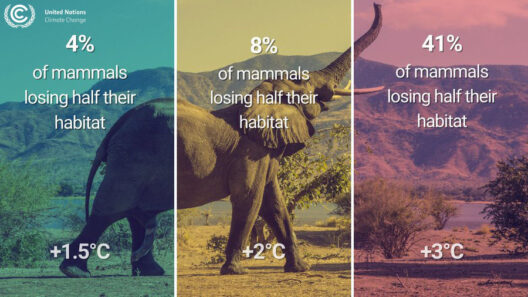Global warming is an omnipresent threat to our planet, catalyzing climatic changes that have profound implications for ecosystems, human health, and global economic stability. Its correlation with anthropogenic activities exacerbates the need for immediate and multifaceted preventive measures. This discourse elucidates various proactive strategies that individuals, communities, and governments can adopt to mitigate global warming and secure a more sustainable future.
To underpin any substantive change, we must first comprehend the underlying drivers of global warming. The predominant catalyst is the proliferation of greenhouse gases (GHGs), notably carbon dioxide (CO2), methane (CH4), and nitrous oxide (N2O), stemming from fossil fuel combustion, deforestation, and industrial processes. A pivotal avenue for reducing these emissions is the transition towards renewable energy sources. Solar, wind, and hydropower mitigate reliance on coal and natural gas, thereby curtailing GHG emissions.
Investments in renewable energy infrastructure are not merely environmentally prudent; they encapsulate economic foresight. As technologies advance, the cost-effectiveness of renewables continues to improve, making them increasingly viable alternatives. Furthermore, governments can accelerate this shift by providing incentives for green energy adoption, including tax breaks and subsidies for homeowners who install solar panels or for businesses that utilize renewable energy in their operations.
While renewable energy presents a formidable solution, enhancing energy efficiency is equally consequential. The implementation of energy-efficient practices across various sectors—from residential to industrial—dramatically decreases energy consumption and carbon output. For instance, retrofitting buildings with energy-efficient appliances and insulation can lead to reduced power demand. Moreover, advocating for stringent efficiency standards in automobiles can significantly diminish fossil fuel usage, thereby lowering emissions.
In tandem with energy efficiency, the concept of sustainable transportation emerges as a critical preventive measure. Transitioning from personal vehicles to public transit systems reduces the number of cars on the road, consequently lowering traffic-related emissions. Promoting the use of electric vehicles (EVs) holds promise, especially as advancements in battery technology enhance range and affordability. Additionally, the establishment of cycling infrastructure encourages non-motorized forms of transport, fostering healthier lifestyles while simultaneously reducing carbon footprints.
Another essential facet of mitigating global warming lies in sustainable agricultural practices. The agricultural sector is a significant contributor to greenhouse gas emissions, particularly through methane released from livestock and rice paddies. Techniques such as agroforestry, crop rotation, and permaculture not only enhance soil health and biodiversity but also sequester carbon, thus reducing atmospheric CO2 concentrations. By adopting climate-smart agricultural practices, farmers can bolster their resilience against climate change while contributing to emission reduction.
Urban planning represents another vital domain where preventive measures can significantly impact global warming. The design of cities can either exacerbate or mitigate environmental degradation. Compact, well-planned communities that prioritize green spaces promote biodiversity and enable effective management of urban heat islands. Incorporating green roofs, urban forests, and sustainable drainage systems enhances urban resilience and plays a pivotal role in climate adaptation.
Individuals also have a substantial role to play. Engaging in conscious consumption—opting for locally sourced products, minimizing waste, and reducing meat consumption—cultivates a lifestyle that supports environmental sustainability. Awareness campaigns can galvanize community action, encouraging collective efforts to pursue eco-friendly habits. Educational initiatives are instrumental in amplifying understanding about sustainable practices, prompting a cultural shift towards environmental stewardship.
Beyond individual contributions, corporate accountability has emerged as a critical mechanism for addressing climate change. Businesses must recognize their influence and obligation to implement sustainable practices. Initiatives toward corporate social responsibility (CSR) can incorporate reducing emissions in supply chains, adopting circular economy principles, and investing in sustainable innovations. Companies that prioritize environmental integrity not only enhance their brand reputation but also drive a broader societal shift toward sustainability.
More broadly, policy action at the governmental level is imperative. Enacting legislation aimed at capping emissions, incentivizing renewable energy, and promoting conservation efforts is essential in the fight against global warming. International cooperation is crucial as climate change knows no borders. Treaties and agreements, such as the Paris Agreement, underscore the need for collective action, urging nations to commit to emission reduction targets.
Finally, investing in research and development (R&D) is vital. Innovation has the potential to unlock new technologies and strategies for combating global warming. From carbon capture and storage (CCS) to advancements in alternative fuels, a robust R&D ecosystem can yield breakthroughs necessary for achieving climatic goals. Aligning public and private investments toward sustainable technologies will fast-track the development of solutions to mitigate climate change.
In contemplating a safer future, it becomes evident that reducing the risk of global warming requires a concerted effort from all sectors of society. The amalgamation of renewable energy, energy efficiency, sustainable transportation, responsible agricultural practices, urban planning, individual action, corporate responsibility, policy action, and investment in innovation meld together to forge a comprehensive approach to mitigate this existential threat. Embracing these preventive measures is not merely an option but an imperative for ensuring the viability of our planet for future generations.







